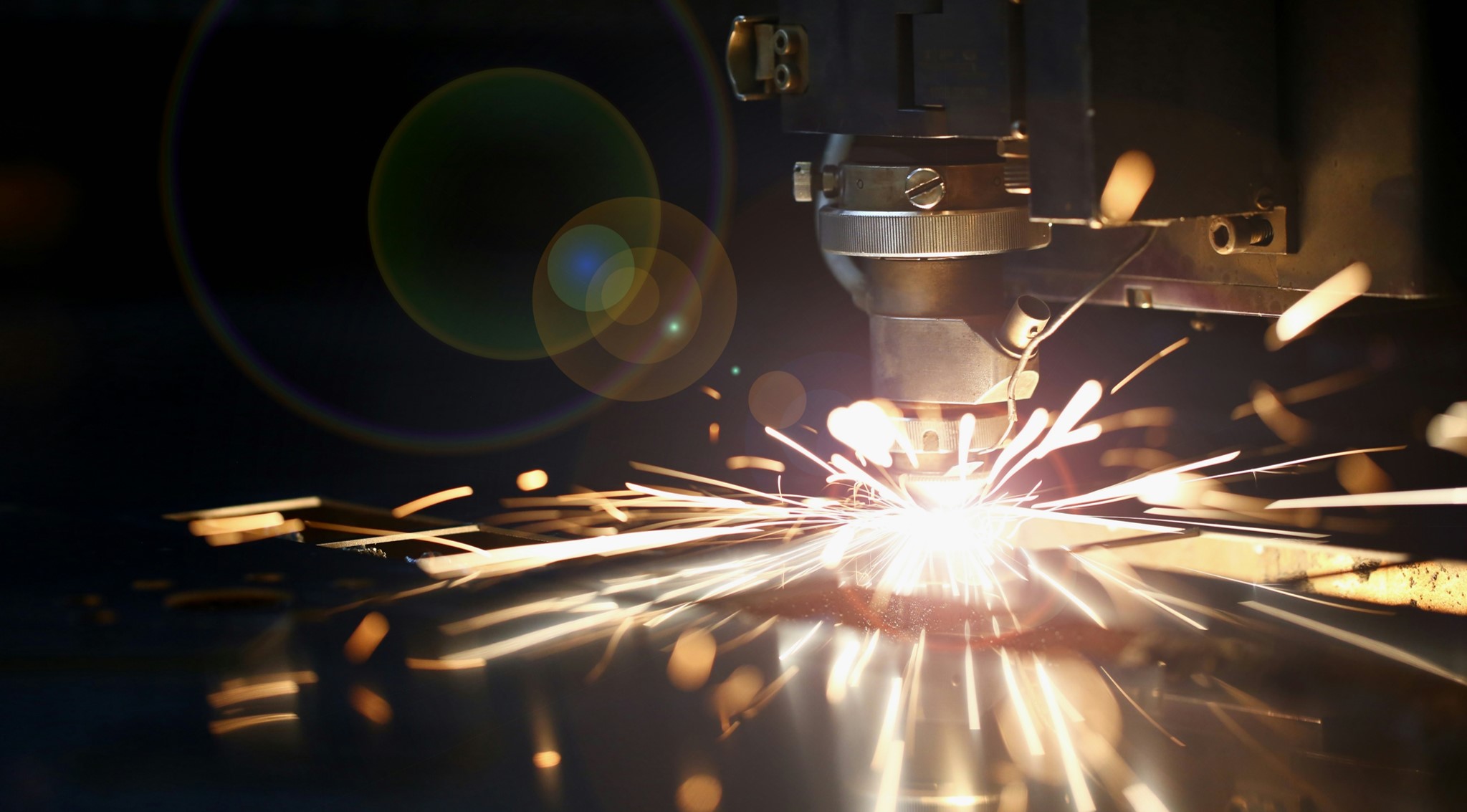Laser cutting has established itself as a key technology in industrial manufacturing thanks to its high precision, ability to work with complex designs, and the excellent quality of finishes. Its speed and versatility make it indispensable in sectors such as automotive, electronics, aerospace, and medicine.
This technique stands out for its ability to cut various materials, such as metals, plastics, ceramics, and wood, delivering clean finishes without the need for additional processes. Moreover, it reduces waste and avoids deformations, as there is no physical contact with the material. Laser cutting will continue to evolve, remaining an essential tool for the future of industrial manufacturing.
How does laser cutting work?
Laser cutting is a thermal process that uses a concentrated beam of light to melt or vaporize material with great precision. This beam is guided by a CNC system, which allows for highly detailed control of the process. At the same time, an assist gas expels debris and cleans the area, ensuring a high-quality cut.
The key steps of the process are:
Generation of the laser beam: The laser heats the material at a specific point until it melts or vaporizes.
Focusing the beam: The beam is directed to a very small area, achieving a clean and precise cut.
Cutting the material: As the laser moves, the material melts or vaporizes, while the assist gas cools and cleans the cutting area.
Assist Gases in Laser Cutting
Assist gases are essential to improve the performance of laser cutting. In particular, nitrogen offers great benefits in industrial production. GasN2 supplies high-quality nitrogen to prevent oxidation in materials such as stainless steel and aluminum, ensuring clean and shiny finishes.
Benefits of nitrogen in laser cutting:
Oxidation prevention: Nitrogen prevents the reaction of oxygen with materials like stainless steel, avoiding oxide formation and discoloration.
Improved quality: It cools the material and removes debris, ensuring precise cuts without burrs.
Increased speed: In certain materials, it allows for faster cutting by avoiding unwanted reactions.
Compatibility with sensitive materials: It ensures clean cuts in materials like aluminum or titanium without altering their properties, which is essential in sectors like aerospace.
Laser cutting, combined with gases like nitrogen, offers precision, efficiency, and sustainability, positioning itself as an indispensable technology in modern industrial manufacturing.

